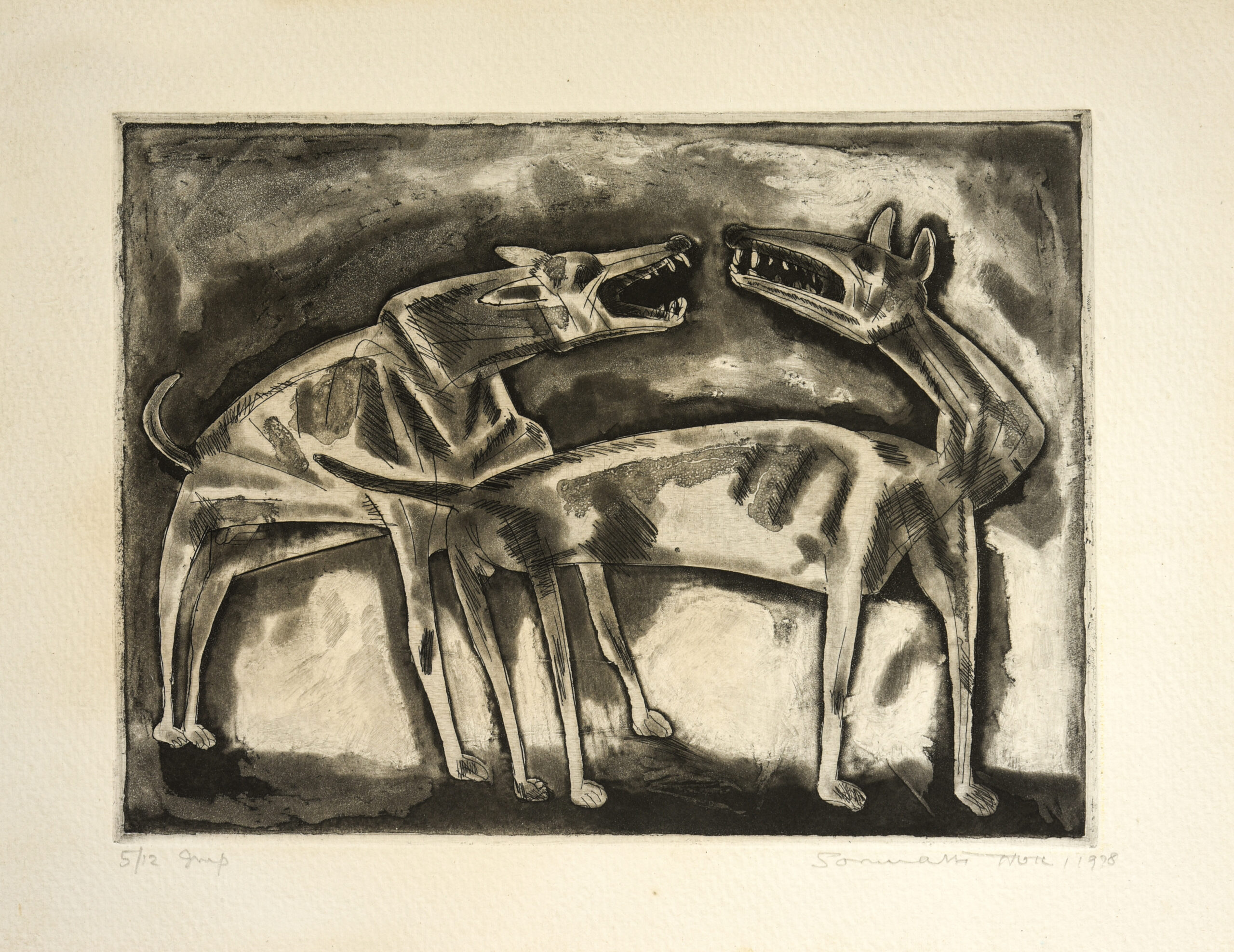Prologue
Somnath Hore was my teacher, my guide for the Cultural scholarship and my PhD supervisor. We had a cordial relationship; as a teacher and a student often have but more significantly, we were friends as well. During my study period at Santiniketan (1968-73 and 1975-1982) I had contributed an article entitled ‘Prasanga: Somnath Hore’ (Discussions on Somnath Hore). Apart from one Marg1 issue, there were hardly any write-ups available on Hore at the time. The essay has written on his life and works that was printed in the Kolkata based Bengali Magazine, Sapatha, 1976. As far as I know, during the 1970s besides my article I have located two more published articles on Somnath Hore, one by Jaya Appasamy & the other one by Pranabranjan Ray. These three articles could be acknowledged as the earlier essays on Hore. Apart from a few write ups by other writers concerning Somnath Hore2 we have at least three Autobiographical books3 by Somnath Hore that are now available to us. The books contains anecdotes from his childhood, his family, friends and members of the Communist Party of India; his association and decisive disunion from the Party, his experience as an artist within the Party, his involvement with the historic agrarians protests known as the Tebhaga movements and his works on the life of the labours of tea gardens during the colonial period. His books also offer us his views on institutions, education and his teaching experience at various art colleges. Hore clearly states the principles and politics of his art works as well. These books also cover other observations and experiences accumulated from his life, such as his short essay on aesthetics, title ‘Shilpakalar Ruchi Bhed,’ on Tagore’s paintings (Rabindra Chitra Path), and on Ramkinkar (Kinkardar Sesh Jatra Shuru).4 He also wrote short essays on quotidian things, such as ‘Churi,’ ‘Kukur’ and ‘Kathberal’.5 Apart from these monographs, two of his illustrated chronicles have also been published, namely Tebhaga Diary and Chabagirar Korcha.6 In my present article, I have taken the opportunity to quote his personal statements collected from his books and Diaries and have cited them wherever I felt they were necessary. This essay, written on the occasion of Somnath Hore’s birth Centenary, attempts to address a brief overview of his life, his creative impulse, and my own experience with him both as a friend, a colleague and a student. It is not a critical reading of his works. My attempt here is to give a brief overview of his life and politics, but also to discuss, briefly, his administrative leadership and pedagogical endeavor within the institutional framework of Kala Bhavana which I have experienced as a student, a scholar and a friend.
To read more subscribe our Magazine

